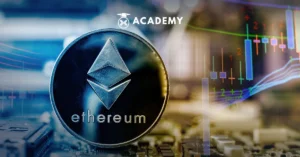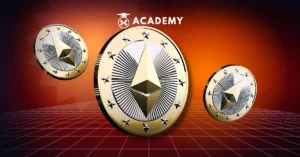Ethereum has become the world’s most popular blockchain, dominating the crypto ecosystem with its smart contracts and decentralized applications (dApps).
However, as the industry has evolved, various altcoins have emerged that aspire to compete with Ethereum and have even been dubbed “Ethereum Killers”.
This article will discuss what is meant by the term, why some altcoins are considered potential competitors, and the features they offer to compete with Ethereum.
What is an Ethereum Killer?

In the crypto world, Ethereum Killer is a term for a blockchain network designed to overcome the limitations of Ethereum—the pioneer of smart contract-based blockchains.
These networks are developed with the hope of competing with and even replacing Ethereum as the primary platform for smart contracts and decentralized applications (dApps).
The term Ethereum Killer first appeared around 2016–2017, when alternative blockchains such as Cardano began to be introduced to the public.
Since then, various smart contract blockchain networks have continued to emerge, such as Tezos, Solana, Fantom, Polkadot, and Avalanche, each offering new innovations to overcome Ethereum’s shortcomings.
Looking at their market capitalization, some of the altcoins that are often referred to as the main Ethereum Killers today are Binance Coin (BNB), Cardano (ADA), Solana (SOL), and Polkadot (DOT).
In fact, in the crypto community, smart contract-based blockchain assets that support dApps are often labeled Ethereum Killers because of their potential to compete with Ethereum’s dominance.
People Also Read: What Is EIP-7702? Comparison & Impact on Ethereum
Why Are Some Altcoins Called Ethereum Killers?
Some altcoins are called Ethereum killers because they offer faster, cheaper, and more efficient technology to compete with Ethereum in the blockchain ecosystem. Here’s a review of the reasons why:
1. Better Scalability
Ethereum faces scalability constraints with high transaction fees and limited speed, especially when the network is congested.
Altcoins like Solana and Polkadot are trying to overcome this with technology that allows for faster and cheaper transactions, making them more efficient in handling large network loads.
2. More Efficient Consensus Protocols
Ethereum initially used Proof of Work (PoW), which is energy-intensive and expensive. As an alternative, many Ethereum killers have adopted Proof of Stake (PoS), which is more energy efficient, environmentally friendly, and allows for faster transactions.
Cardano and Polkadot, for example, have implemented PoS earlier, making them more attractive to developers looking for efficiency and sustainability.
3. Ability to Support dApps Better
Ethereum’s high fees and limitations have often been a barrier for dApp developers looking to build complex applications.
Altcoins like Solana and Avalanche offer faster, cheaper transactions, and higher processing capacity, making them a more attractive platform for innovation in the blockchain ecosystem.
People Also Read: Top Ethereum Owners: Who Are the Biggest ETH Whales?
Altcoins Considered Ethereum Killers

Here are some crypto assets that are being touted as Ethereum Killers along with the alternative solutions they offer.
1. Solana (SOL)
Solana is considered one of the Ethereum Killer projects due to its transaction speed. Founded in 2017 and officially launched in 2020, Solana features an innovative consensus mechanism called Proof-of-History (PoH).
This mechanism works as a time stamp for Proof-of-Stake (PoS), ensuring that each transaction has a clear sequence and can be processed more efficiently.
Thanks to this technology, Solana can process thousands of transactions per second with low fees, making it a strong competitor to Ethereum which is just switching to PoS in 2022.
2. Cardano (ADA)
Cardano was introduced in 2017 by Charles Hoskinson, who previously co-founded Ethereum. The project stands out for its approach based on academic research and peer review.
Cardano uses Ouroboros, a variant of the PoS algorithm that divides time into epochs and slots. This mechanism ensures more efficient and energy-efficient block production compared to Ethereum which was originally based on Proof-of-Work (PoW).
In addition, Cardano has a hard fork combinator feature that allows network updates without splitting the blockchain, unlike Ethereum and Bitcoin.
The latest update, Hydra, released in 2023, also significantly improved its scalability.
3. Polkadot (DOT)
Polkadot was designed by Gavin Wood, one of the founders of Ethereum, and was officially launched in 2020.
Unlike Ethereum, Polkadot operates as a Layer-0 with a parachain architecture that allows multiple blockchains to operate independently while still sharing security through the Relay Chain.
This technology improves interoperability and scalability, allowing for more efficient communication between different blockchains.
Although it does not have direct compatibility with the Ethereum Virtual Machine (EVM), projects like Moonbeam facilitate the execution of smart contracts in the Polkadot ecosystem.
4. Binance Smart Chain (BSC)
Binance Smart Chain (BSC) has been operating since 2020 as a network that supports smart contracts and decentralized applications (dApps).
BSC is compatible with Ethereum, allowing developers to easily migrate their applications.
The network also supports interoperability with Binance Chain, allowing for more flexible asset transfers.
By using the Proof of Staked Authority (PoSA) mechanism, which is a combination of Delegated Proof of Stake (DPoS) and Proof of Authority (PoA), BSC can process transactions at low fees and high speeds.
However, the limited number of validators raises concerns about the decentralization of the network.
5. Avalanche (AVAX)
Avalanche is a smart contract platform known for its transaction speed and efficiency. With a market cap of over $20,400,000,000 and a DeFi TVL of over $11,300,000,000, Avalanche is one of Ethereum’s main competitors.
Thanks to its unique consensus mechanism, Avalanche is able to reach transaction finality in less than two seconds, much faster than Ethereum which takes around six minutes.
The platform is also compatible with the Ethereum Virtual Machine (EVM) so developers can run Ethereum smart contracts on Avalanche without having to change the code.
This advantage makes Avalanche increasingly attractive to developers and major partners such as Mastercard and Deloitte, who are interested in developing blockchain-based solutions through Ava Labs.
With the various advantages offered, this altcoin continues to compete with Ethereum in providing faster, cheaper, and more efficient solutions for decentralized applications.
People Also Read This: Avalanche9000: Lower Gas Fees & Increase Transactions
Ethereum vs. Ethereum Killer Comparison
Ethereum and Ethereum Killer compete in terms of transaction speed, fees, and scalability, with each having its own advantages and challenges. Here are some comparisons between the two:
1. Transaction Speed
Ethereum often experiences slower transaction speeds compared to altcoins like Solana and Binance Smart Chain.
This is due to Ethereum’s initial design relying on a more complex architecture and high network utilization.
Meanwhile, Ethereum Killer uses more efficient technology, such as a Proof-of-Stake-based consensus mechanism or other innovative mechanisms, allowing for faster transactions and lower latency for users.
2. Transaction Fees
One of Ethereum’s main challenges is its high gas fees, especially when the network experiences a spike in activity. This is a barrier for many users and developers who want to run applications on top of Ethereum.
In contrast, many Ethereum Killers offer significantly lower transaction fees by utilizing more efficient technology and solutions like Layer 2.
The more energy-efficient consensus mechanism also helps provide a more affordable experience for users.
3. Scalability
Ethereum previously relied on the Proof-of-Work mechanism which had limitations in handling large transaction volumes.
Although The Merge shifted Ethereum to Proof-of-Stake, altcoins such as Polkadot and Avalanche still excel in scalability through parachains or modular consensus.
With this approach, Ethereum Killer is able to handle more transactions per second without experiencing network congestion as is often the case with Ethereum.
Conclusion
So, that was an interesting discussion about What is Ethereum Killer? Get to Know Ethereum’s Biggest Competitors which you can read in full at the Crypto Academy at INDODAX Academy.
In conclusion, Ethereum Killer refers to altcoins that offer innovative solutions to overcome various Ethereum challenges, such as scalability, transaction fees, and processing speed.
Although Ethereum remains one of the largest and most widely used blockchain platforms, several altcoins such as Solana, Polkadot, and Binance Smart Chain continue to show potential as strong competitors.
However, no blockchain is completely perfect. Each project has its own advantages and limitations, both in terms of technology, adoption, and the ecosystem that supports it.
Therefore, before investing, it is important for investors to understand not only the benefits offered but also the risks that may occur.
Basically, a thorough understanding will help in making wiser investment decisions according to each person’s goals and risk tolerance.
FAQ
1.What is an Ethereum Killer?
Ethereum Killer refers to an altcoin or blockchain that offers a better solution than Ethereum in terms of cost, speed, and scalability.
2.Why is Ethereum considered to have shortcomings?
Ethereum often faces problems with high gas fees and slow transactions, which hinder mass adoption.
3.What are Solana’s advantages over Ethereum?
Solana offers very fast transaction speeds and very low fees compared to Ethereum, making it more efficient.
4.Is Binance Smart Chain an Ethereum Killer?
Yes, BSC offers low transaction fees and compatibility with Ethereum, making it an attractive alternative for dApps developers.
5.Can Cardano really replace Ethereum?
Cardano offers scalability and efficiency with PoS, but is still in development and needs more adoption to fully compete with Ethereum.





 Polkadot 8.91%
Polkadot 8.91%
 BNB 0.54%
BNB 0.54%
 Solana 4.81%
Solana 4.81%
 Ethereum 2.37%
Ethereum 2.37%
 Cardano 1.35%
Cardano 1.35%
 Polygon Ecosystem Token 2.11%
Polygon Ecosystem Token 2.11%
 Tron 2.85%
Tron 2.85%
 Market
Market


